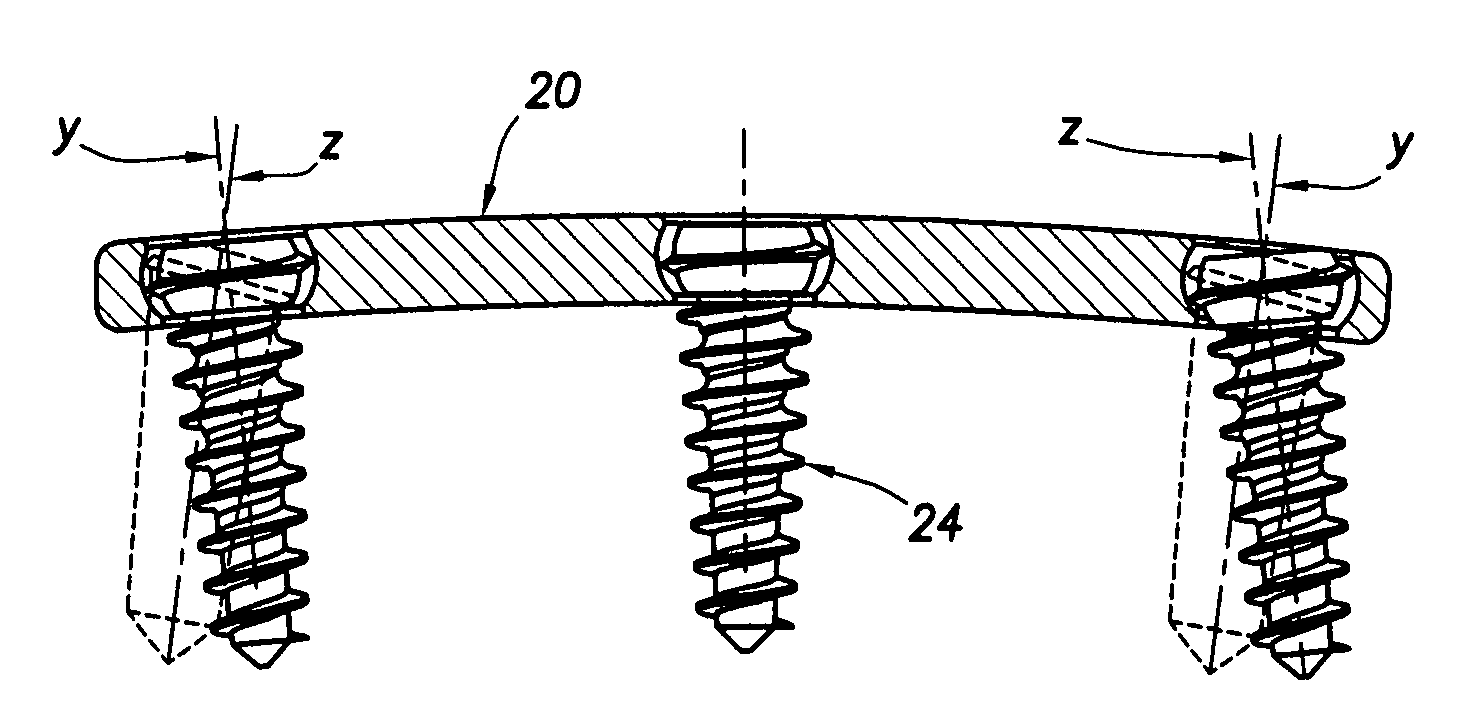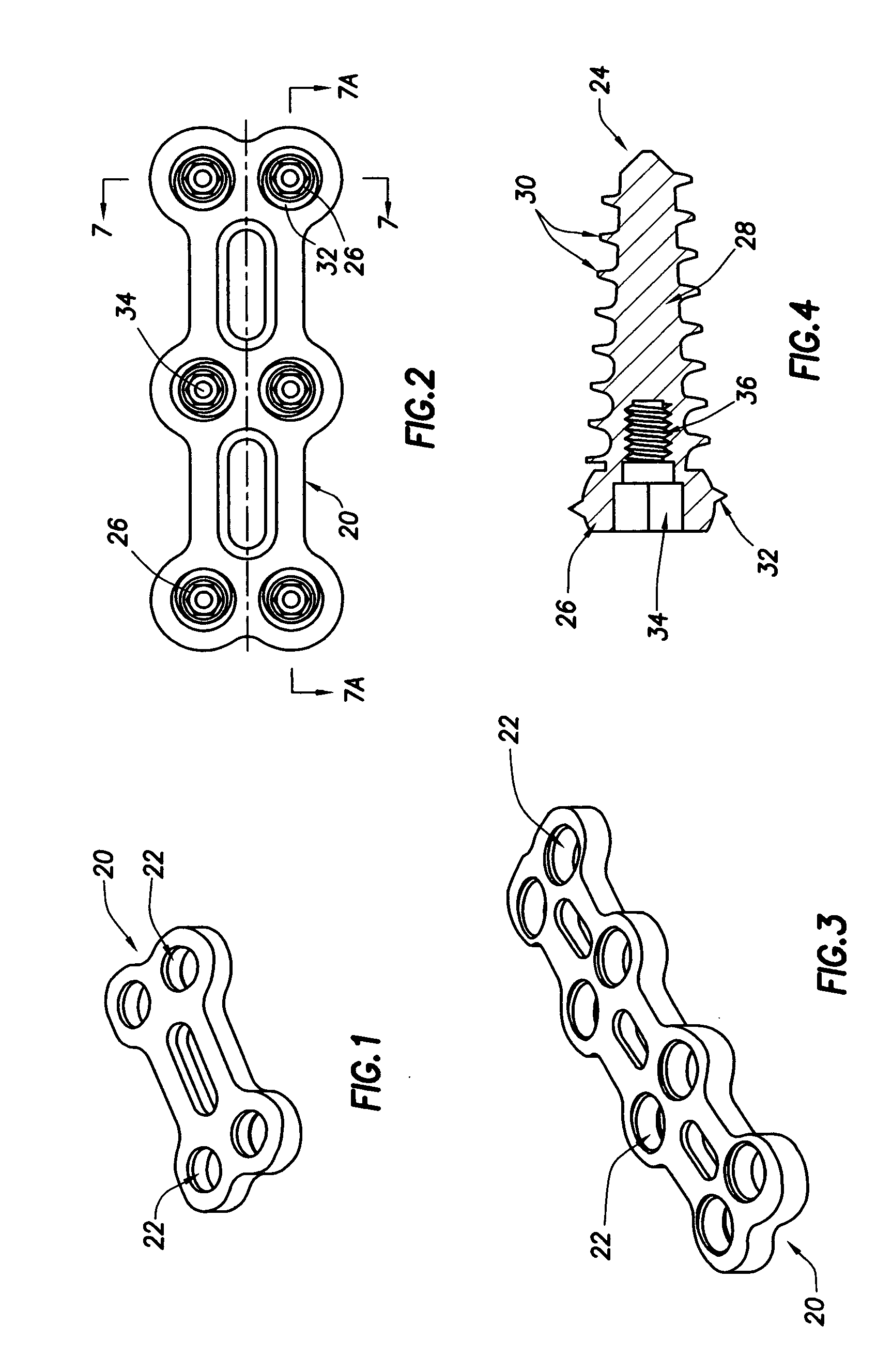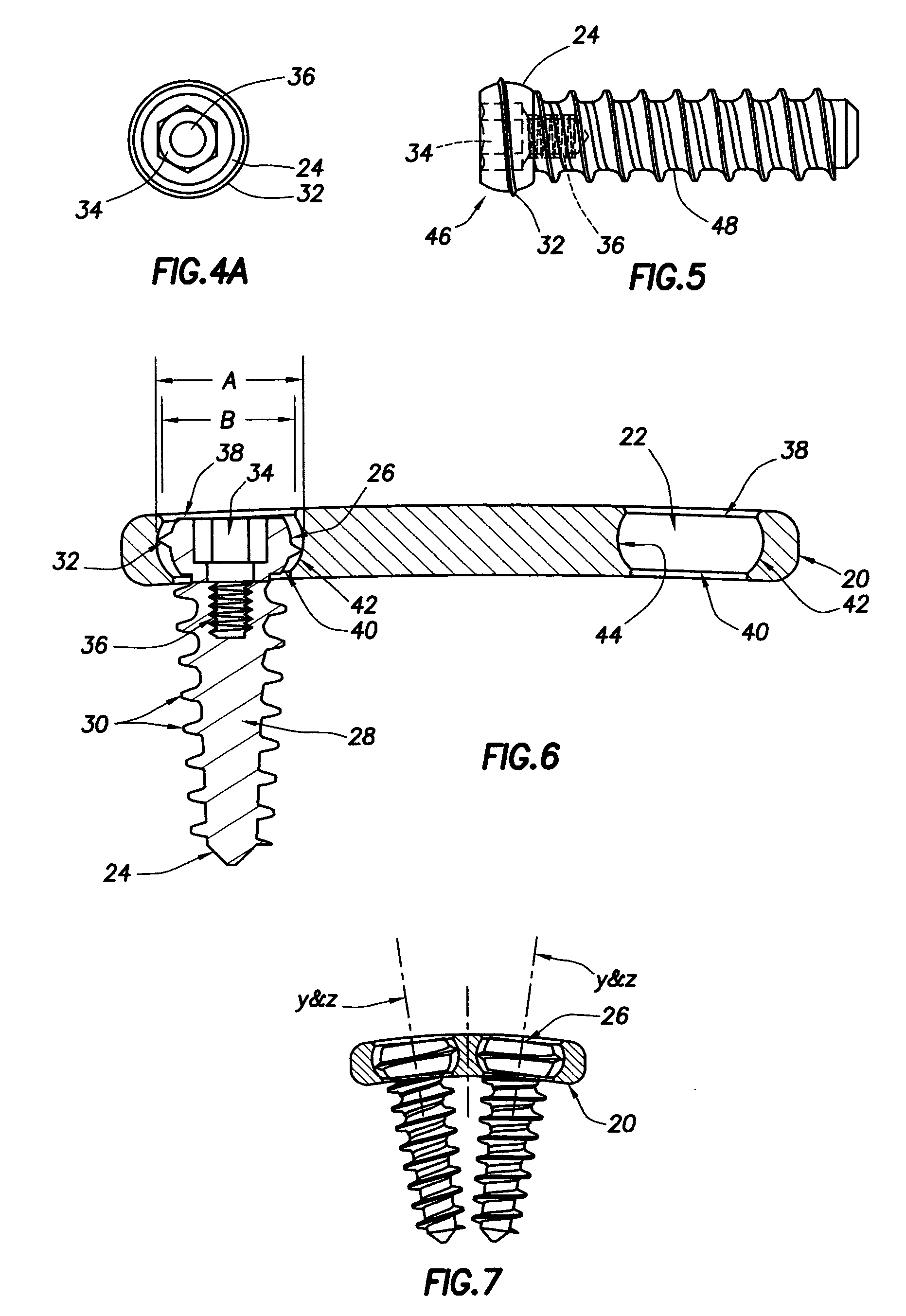Multi-axis connection and methods for internal spinal stabilizers
a stabilizer and multi-axis technology, applied in the field of multi-axis connection and methods for internal spinal stabilizers, can solve the problems of increasing the instability of the spine, challenging the treatment field of damaged or diseased intervertebral disks,
- Summary
- Abstract
- Description
- Claims
- Application Information
AI Technical Summary
Benefits of technology
Problems solved by technology
Method used
Image
Examples
Embodiment Construction
[0023]Referring now to FIGS. 1-3, a preferred embodiment of a plate comprising one component of a multi-axis connection for a spinal stabilizer constructed in accordance with the present invention is shown. The preferred embodiment of this plate, indicated generally at reference numeral 20, is provided with a plurality of holes 22 spaced along the length of the plate at locations corresponding to the spacing of the vertebrae of the spinal column of a patient (not shown) for receiving screws as shown in FIG. 2 at reference numeral 24 for screwing into the body of the respective vertebra to affix the stabilizer to the spine. The three plates 20 shown in FIGS. 1, 2, and 3 are sized, and define a corresponding number of holes 22, for stabilizing two, three, and four vertebrae, respectively. Although not shown very well in FIGS. 1-3, plate 20 is curved along its cross-sectional axis (see FIGS. 7, 7B, and 7C) and arched, or curved, along its longitudinal axis (see FIGS. 6 and 7A) so as to...
PUM
 Login to View More
Login to View More Abstract
Description
Claims
Application Information
 Login to View More
Login to View More - R&D
- Intellectual Property
- Life Sciences
- Materials
- Tech Scout
- Unparalleled Data Quality
- Higher Quality Content
- 60% Fewer Hallucinations
Browse by: Latest US Patents, China's latest patents, Technical Efficacy Thesaurus, Application Domain, Technology Topic, Popular Technical Reports.
© 2025 PatSnap. All rights reserved.Legal|Privacy policy|Modern Slavery Act Transparency Statement|Sitemap|About US| Contact US: help@patsnap.com



